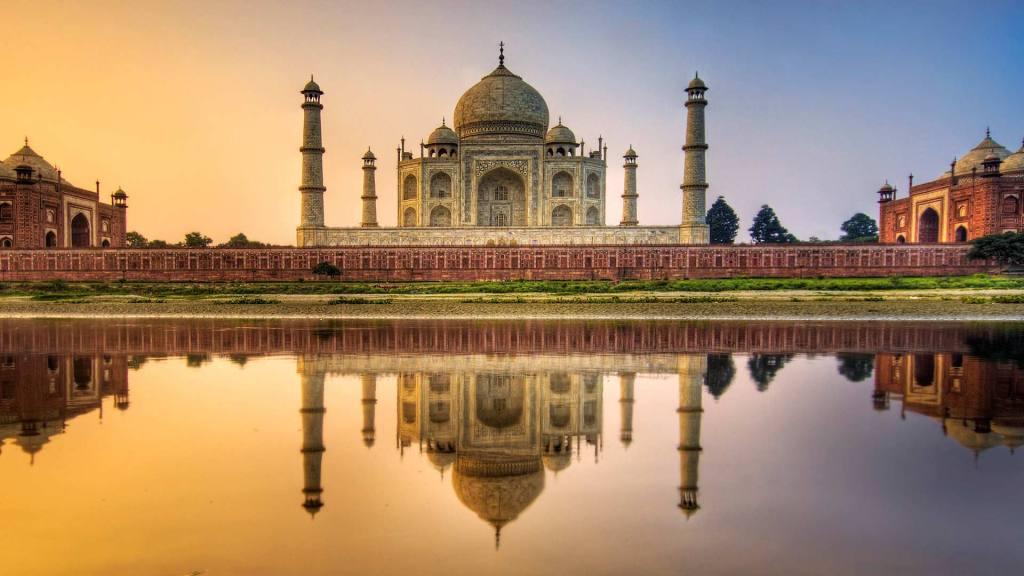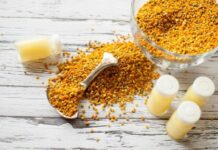India is a vast country and is among the developing nations in the world. India is the best example for “Unity in Diversity”. It has a lot of diversity in customs, languages, traditions and many other things. India is well-known around the world for its ancient culture and history. Here are more interesting facts about India.
Read More: 12 Things about Indian Flag Every Child Should Know
Top 101 Interesting Facts about India
- India, a beautiful peninsula in the Asian continent is the largest democracy in the world. India gained independence from the British regime on 15th August, 1947 and framed the constitution on 26th January 1950.
- Mahatma Gandhi who was originally known as Mohandas Karamchand Gandhi led the non-violence movement and succeeded in his mission to obtain freedom from the British rule. Hence, he is called ‘The father of the nation”.
- India is a colorful nation with a tri color national flag. The tri color includes saffron, green and white with the blue Asoka Chakra in the center of the flag. The Ashoka Chakra (wheel) contains 24 spokes symbolizing the 24 righteousness. It represents the Asoka Chakra in Sarnath where Buddha started his preaching on peace and non-violence. Asoka is a great spiritual king who spread Buddhism all over the world with the help of his son Mahendra and daughter Sangamitra.
- The National Emblem is three lion depicting the lion of Sarnath which was built in third century B.C. by King Asoka to mark the first preach of Buddha. Sarnath is near Varanasi in the state of Uttar Pradesh.
- ‘Jana Gana Mana’ is the national anthem composed by Pandit Ravindranath Tagore in Bengali, one of the languages spoken in India. The declaration was done on 24th January,
- The national song is ‘Vande Mataram’ written by Bankim Chandra Chatterjee. This song was sung for the first time in the year 1896 during a gathering by the Indian National Congress.
- The national tree is the banyan tree symbolizing the ancient culture and tradition and India is a nation that supports and lends a helping hand to other nations at time of crisis similar to the branches of the tree.
- The national fruit is mango due to the fact that it the sacred fruit described in the Vedas (the spiritual knowledge). It is also called as the ‘divine food’.
- The national calendar of India is the Saka calendar. The Gregorian calendar is also followed in India.
- India derived its name from the ancient Indus river in the Indus valley, the most ancient and first civilization in the world. It was once the land of the Hindus with Hinduism as the ancient religion and community before the British and Mughal invasion. Hence, it is also known as Hindustan.
- India is also called as Bharath named after the king Baratha a renowned character in the ancient epic Ramayana.
- The official language of India is Hindi, the widely spoken language and English.
- India’s national language is Sanskrit in which all the scriptures and Vedas are written. Most of the languages in India are derived from this language except Tamil, the first and most ancient language in the world.
- The Indian legislature is called the ‘Sansad’ consists of the Lok Sabha lead by the Prime Minister supported by his cabinet ministers and the Rajya Sabha led by the President of India. The President of India is the first citizen and his wife is the first lady. He is the supreme head of the country and appoints the prime minister. The lok sabha and rajya sabha are jointly called as the parliament.
- The Supreme Court is highest judicial body running various high courts in the respective states and various other lower courts run under the high court.
- A majority of India’s occupation is cultivation and the farmers contribute to the greatest percentage of working community in India. Hence, the slogan given by former president Lal Bahadur Shastri ‘ jai javan jai kissan’ is popular in India. Javan refers to the army men who sacrifice their lives for their mother country. Kissan refers to the farmers in Hindi.
- India is rich in its cultural heritage with dance and music. Bharthanatyam, Kathak, Kucchupudi, Kathakali are some of the most prestigious dances contributing to India’s pride and cultural heritage. Similarly, the carnatic music and Hindustani are admired by the people of the world. Melodious and spiritual musical instruments such as flute, sitar, table, mirithangam, and violin contribute to India’s traditional music. There are world class musicians who contribute to India’s cultural heritage and pride.
- India’s traditional dress is the sari and of course salwar kameez is the widely worn dress in India. The Banaras silk and Kanchivaram silk are widely popular among the people of the world for their bright colors, designs and elegance. The gagra kohli is also widely worn in India.
- India is also popular for various ancient folks and folk dances such as the Garba dance, Kolkata, Kummi attam, Bangara dance, Kalari attam, Mohini attam, etc.,
- India is a land of the tourists with attractive tourist spots portraying the rich cultural heritage and spiritual wonders and natural beauty. Some of the interesting tourist spots include the Kashmir valley, Simla, Darjeeling, Kulu manali, Jaipur (pink city), Rameshswaram, Varanasi, and many other temples and sanctuaries.
- The northern side is covered by the Himalayas being the highest and longest mountain chain in the world with Mount Everest being the highest peak in the world. The first person to climb Mount Everest was Tensing Norgay and the first woman was Bachendri Pal.
- The river Ganga is a perennial and sacred river originating in the Himalayas. The place where Ganga originates is called Gangotri and is considered as a place of worship. It is an ancient belief that a sacred dip in the Ganga relieves oneself from all his sins. Ganges is the longest river in India. It runs for 2529 km and flourishes the agricultural growth of several Indian states.
- Other renowned rivers include Brahmaputra (longest river), Yamuna, Saraswathi, Godavari, Kaveri, Tungabhadra.
31. Being a Hindu country with spiritual heritage there are lots of temples with beautiful sculptures bringing out India’s craftsmanship. - India is a country that accepts all other religions and religious communities and hence there are renowned churches and mosques and gurudwaras.
- The gurudwara in the Amristsar a sacred shrine of the Sikhs is called the golden temple in the state of Punjab.
- The Taj mahal, a tomb built by King Shah Jahan for his wife Mumtaz symbolizes true and immense love and had become a romantic symbol of the world. The king engaged 22,000 craftsmen and laborers in building the Taj Mahal and the completion took 22 years. The mahal was completely built with marble and precious stones embedded in the beautiful drawings. Most of the stones were stolen and there is also a folklore that Shah Jahan cut the hands of all those who were involved in building this beautiful monument so that this would be unique in the world. There is another folklore that says all those craftsmen and laborers were executed. Whatever, today Taj mahal is one of the Seven Wonders of the World.
- The cuisine and culinary art of India makes it the most sought after place when it comes to dining. Some of the delicious cuisine includes the Mughal biriyani, spicy gravies, sweet desserts such as kheer, payasam and snacks such as samosas, cutlets etc.,
- India is the only place where food is served in plantain leaf symbolizing hospitality. This is served mostly in the southern region of the country.
- India is also known for its ancient medicine curing almost all diseases. The Vedas contain the secret formula for preparing medicines such as ayurveda, halopathy and homeopathy which has great medicinal value. The country is rich in medicinal herbs that cure almost all diseases, many medicinal secrets still unrevealed. The first plastic surgery was done in India and ancient medicine had cure for invasive procedures such as fractures.
- Science and Maths were also the fields of excellence contributing to the innovation of trigonometry, calculus and algebra.
- The missiles today had their origination from the arrows depicted in the ancient epic Ramayana. India is the birthplace of archery and had skilled Indian emperors who were originally called as ‘Saduranga’and the world chess champion is an Indian named Viswanath Anand.
- Dieties such as Lord Ganesh and Lord Krishna are known worldwide. Lord Ganesh is known as elephant god or lucky Ganesha. Lord Krishna’s ‘Bhagavad Gita’ is known all over the world preaching the doctrines for being a perfect human. The ‘Hare Rama Hare Krishna’ movement was started in India by the ISKCON.
- The Kumbh Mela is a popular religious festival celebrated by the Hindus in India once in twelve years. A huge gathering worship Trimbakeshwar (a form of Lord Shiva) and 60 million people in the year 2001 gathered for this festival breaking a world record.
- The cotton fabric makes India more popular and has become the most fascinated fabric for most of the Westerners and Europeans. Mahatma Gandhi started the ‘Swadesi’ movement by encouraging every Indian to spin cotton during the freedom fight era to mark the boycott of the use of clothes from Britain.
- India produces most of the world’s dried beans. Kidney beans and chickpeas are few to mention. Also, India is the leader in banana and jute export.
- The Sundarbans in the Bengal is the dampest region in India.
- There is rain almost all day in Cherapoonjee.
- Tibet and Nepal were once part of India and now its neighboring countries. Afghanistan and Bangladesh and Pakistan which split from India are also its neighboring countries and once part of India. Still, ancient epics depict certain places in Afghanistan such as Kandahar and Hastinapur.
- India has the famous “Lotus Temple, which was architected in the form of a lotus flower, built in marble. It has 27 huge petals.
- Marriages in India are very rich and grand especially Hindu marriages. The stages are decorated with Marigold flowers and the marriage is filled with fun and happiness uniting relatives and friends. Lots of sweets are served during the marriage. Colorful outfits and music are part of Indian marriages.
- Cow is the sacred animal and worshipped as the goddess yielding milk. Hence, India is the world largest milk producing country.
- Though England is the birthplace of cricket, India is excels the game today and has world champions such as Sachin Tendulkar. Most of the Indians are fascinated by the game though hockey is the national game. India won a gold medal in hockey during the 1968 Olympics.
- The numeral zero was introduced by Aryabhatta and it is called as ‘cipher’` that adds value to the other numerals.
- Ravindranath Tagore won the Nobel Prize for literature.
- India had great painters in par with Michael Angelo such as M.F. Hussain.
- Being the land of spirituality, Vivekananda who was the disciple of bagavan Ramakrishna Paramahamsar hailed the power of Hinduism in the west by giving a historic speech in the United States senate.
- India is the birthplace of great saints such as Adi Shankar who gave ‘Advaida’ and Mahans such as Ragavendra, Vallalar, Maatha Sarada, Shridi Sai Baba who preached peace and virtues through Hinduism.
- India is also the birth place of certain religions followed worldwide such as Buddhism and Jainism. Lord Gautama Buddha founder of Buddhism was born in Nepal which was once in India and he attained enlightenment and started his first preach and attained mukthi (salvation) in places such as Sarnath, Bodh Gaya and Lumbini gardens in India.
- The martial arts being practiced and taught in Asian countries today, originated in India and spread to Asian countries by Buddhist monks from India.
- India was one of the richest countries before the British invasion. The diamond in Queen Elizabeth’s crown is from India. In ancient India, women threw their gold earrings to quit the birds eating their grains. Also, elephants were used to split the grains rather than bulls as the harvest was abundant.
- The Brahadeswara temple in Tanjur (Tamil Nadu) is a historic pilgrimage and was carved from a single stone. It still remains a mystery as to how the elephants were used to carry heavy stones while building the temple. Another amazing fact about this temple is that this temple does not cast a shadow at all.
- The longest beach is the Marina beach in Chennai, the capital city of the state of Tamil Nadu and it is also one of the Seven Wonders of the World.
- Kashmir is called the heaven of India with beautiful natural resorts and greeneries attracting most of the tourists. Hence, the dispute between India and Pakistan is still unresolved in owning Kashmir. It is famous for green apples and the Wular Lake and Dhal Lake are renowned tourist spots.
- India is green through the year and has six seasons: summer, autumn, winter, spring, with monsoon rains.
- India is the world largest tea exporters with majority of tea leaves planted in Assam and Nilgiris.
- Aryan civilization has roots in India. Aryans were indo Europeans who migrated to India in B.C.and settled in North West India. Other than Aryans, Persians also are migrated and settled in India and formed a community called Parsis who followed Zoarastranism. They worshipped the fire god. Today, Hindus, Muslims, Christians, Sikhs, Jains, Parsis are all under one roof in India.
- The Tamil community called as Dravidians occupied the southern region in a state called Tamil Nadu in India. Earlier all the southern states were together as one state.
- India’s first satellite was Arybahatta.
- Mahabalipuram in Tamil nadu is famous for the stone temples called seven pagodas and the sculptures. All are eroded by the sea and only one pagaoda stands today to mark the Pallava dynasty.
- Kanyakumari is the southern tip of India as Kashmir is the northern tip. The Kanyakumari sea is a place where three seas join and the sand in the sea shore is colorful.
- India is popular for many spiritual mysteries, realities and miracles. There are lots of evidences for the numerous miracles that have occurred in India.
- Jaipur in Rajasthan is called as the pink city attracting lots of tourists. It is called as pink city due to the Pink Hawa Mahal. It is also popular for the elephant and camel rides.
- India stands tenth in the world GDP ranking. In 2011, its GDP is 1897, 608 millions of US $
- Children’s day is celebrated on the 14th of November. It marks the birth of Pandit Jawaharlal Nehru, the first prime minister of free India. He was an ardent lover of children and rose flower.
- Teacher’s day is celebrated on the 5th of September. It marks the birth of Sarvapalli Radhakrishnan, former President of India. He was a teacher by profession, prior to his presidential career.
- Deepavali is festival of lights. It is celebrated worldwide by all Indians by fireworks and sharing love and joy with fellow people.
- Holi is the festival of colors. Color powders are thrown on each other to show their love and joy.
- Pongal is celebrated in the month of January. It is the harvest festival of south Indians. It is celebrated for three days as Pongal (thanks to sun god), Mattu Pongal (thanks to cow for the harvest), Kanum Pongal (thanks to each other )
- Jallikattu is hosted during Pongal festival. It is an ancient bull taming sport. It is a much humane way of bull sport where the bulls are not killed, instead angry bulls are tamed without any weapons.
- India fares well in the tennis for many years. India’s Leander Paes and Mahesh Bupathi have won several championships in doubles tennis. This includes grand slams French open, Wimbledon, US open and Australian open tennis.
- India has been the world Kabadi champions for many years. Kabadi is an ancient Indian sport recognized and included in the Asian games. It is yet to be included in the Olympics.
- India’s wrestling team has performed well at the international levels. Sushil Kumar of India have won two Olympics medals.
- Indian space research organization is the 6th largest in the world. They have successfully developed PSLV and GSLV rockets which has launched several satellites which includes Chandryan, the first Indian mission to the moon.
- Varanasi is the spiritual capital of India. It is in the banks of River Ganges. It houses the temple of Kasi Viswanath.
- Konark is a small town in Orissa. It has the world famous sun temple. It is also known as the black pagoda
97. Tirupati is the pilgrimage city in Andhra. It hosts the temple of Lord Venkateshwara. It is one of the world’s richest temples with revenue of over several cores per day. - Ramayana and Mahabarath are the two great epics of India. They both depict different avatars of Lord Krishna. They convey the moral truth, ‘Goodness triumphs over Evil’
- Indian women have performed well in the international beauty pageant show. India’s Aishwarya Rai has won the Miss World title in 1994. Sushmita Sen has won the Miss Universe title in 1994. Since then, several other women have won Miss World and Miss Universe titles.
- Satyajit Rai won the Oscar award for his life time achievement in film making.
- A.R. Rahman won the Oscar for composing music in the movie ‘Slumdog Millionaire’.
- The name ‘India’ is derived from the river Indus. It is a valley around which people settled in earlier times.
- India is the world’s oldest, largest and continuous civilization – the Indus Valley civilization.
- India is also one of the largest democracies in the world.
- India has the largest postal system in the world with more than 150,000 post offices, which is thrice the size of that of China.
- India has more than 300,000 active mosques. This outnumbers any other country in the world, even the Muslim countries.
- The second largest pool of engineers and scientists is from India.
- India is the second largest English speaking country in the world – 125,226,449 numbers of English speakers.
- India has the world’s largest Hindu population. Nearly 81% of its population identifies itself as Hindu. India is one of the three countries (other are Nepal and Mauritius) in the world where Hinduism is the majority.
- Bollywood is the largest movie industry in terms of output, followed by Nollywood – the movie industry of Nigeria.
- India is also the country in which the highest number of votes were cast for a national general election. In 2009, the country saw its 417 million people cast their votes in five phases to elect the 543 members of the 15th Lok Sabha.
- A world record was set when gathered and walked in Kolkata. The walk was a demonstration to attain peace in the country and the world.
- Indian railway employs more than a million people, making it the largest employers in the world.
- India is the 7th largest countryin the world and the largest democracy.
- India is the world’s largest milk producer, with 16 percent of global production, followed by the United States of America, China, Pakistan, and Brazil.
- India leads the world with the largest number of films.
- Over 4700 daily newspapersin more than 300 languages are produced in India.
- The largest wholesale spice marketof Asia is in India – Khari Baoli, New Delhi.
- India’s road network is the world’s second largestwith 4,865,000 km of roads constructed. (2014)
- India is house to the world’s biggest family:39 wives, 94 children, and 33 grandchildren. The family lives in a 100-room, four-story house set amidst the hills of Baktwang village in the Indian state of Mizoram.
- The highest award in the country is Bharat Ratna.
- The Human Calculator, Shakuntala Devi is a math prodigy from India. She could calculate 7,686,369,774,870 × 2,465,099,745,779 and provided the correct answer in mere 28 seconds.
- Chesswas invented in India.
- Apart from the U.S. and Japan, only India has built a super computer indigenously.
- Yogaoriginated from India and is still in existence for over 5000 years.
- Calculus, Trigonometry, and Algebra originated in India.
- The decimal system and place value system were developed in India around 100 B.C.
- Snakes and ladders– the game, was invented in India in the 13th century by a poet saint Gyandev. The ladders represent the virtues while the snakes indicate vices. The game was designed on the basis of the concept that good deeds take you to heaven while bad deeds take you to hell.
- 90 countries from all over the world buy softwarefrom India.
- Takshila, the first ever university in the world started around 700 BC in India.
- In the August of 1982, ‘the highest bridge in the world’– the Baily Bridge, was built by Indian Army.
- Switzerland has declared May 26 as ‘The Science Day’ in honor of visiting President APJ Abdul Kalam. Sadly, the former president passed away on 27 July, 2015 in Shillong, Meghalaya, India.
- More than $6 million is donated in the Vishnu temple in the city of Tirupathi. It was built in the 10th century.
- Benaras, now known as Varanasi is the oldest continuously inhabited city in the world. Buddha had also visited it.
- India has the world’s largest attended events. The biggest of which is ‘Kumbha Mela’ of 2001 – attended by 60 million people and was seen from space.
- India has the world’s highest cricket ground which is in Chail, Himachal Pradesh. It is 2444 meters above the sea level and was built in 1983.
- More than 54 crore people voted in 2014 general elections. This is more than the entire population of the U.S., U.K., Japan, and Australia combined.
- India’s space program is among the top five space programs in the world despite having budget constraints.
Read More: 21 Interesting Facts About Sarojini Naidu Every Kid Should Know













